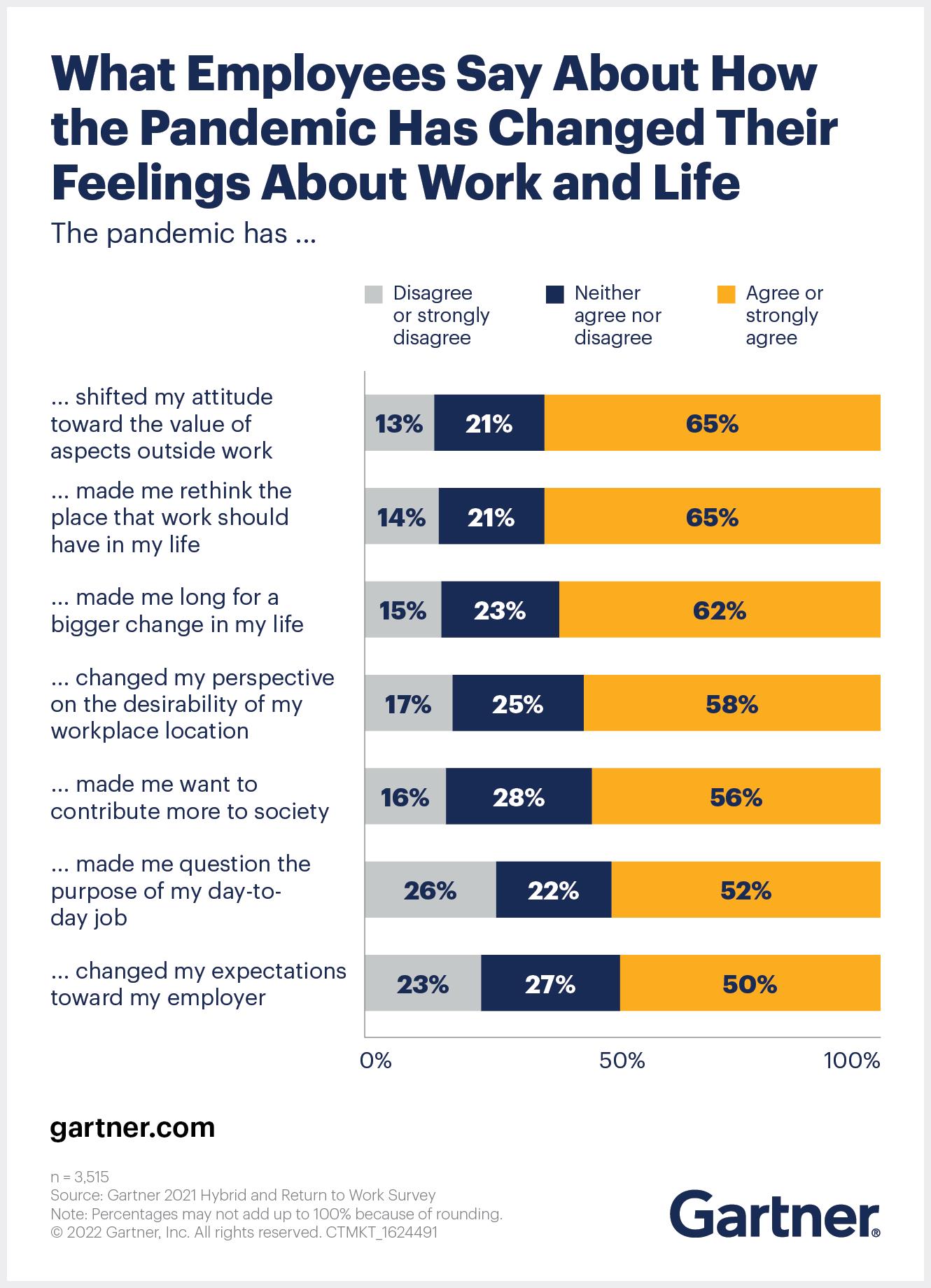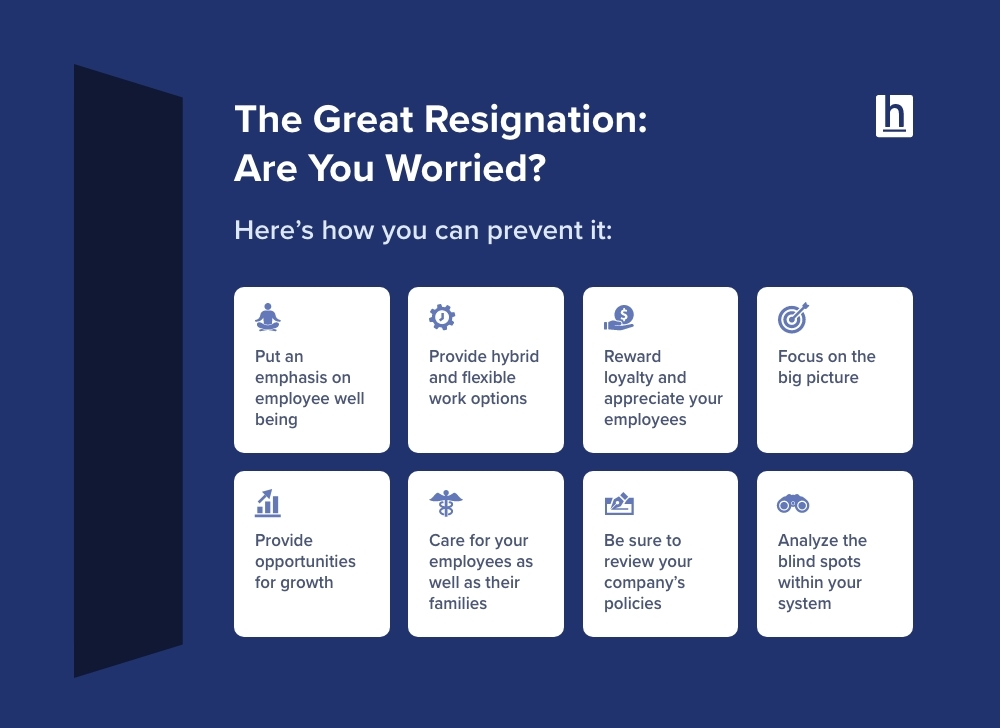
The Great Resignation: Everything You Should Know And Helpful Tips To Counter This Phenomenon
8th March 2023
Research reveals that 50.5 million people quit their jobs in 2022 while 18% of the labor force remained employed.
The world has massively changed during the pandemic and apart from quarantines and shutdowns there was another issue that was taking the world by storm. This event was termed a great resignation where employees all around the world were quitting their jobs every day. Additionally, many organizations and businesses laid off their employees thus making them unemployed.
Thus, if you want to comprehend what this great resignation is, why are employees quitting, and how you can combat the issue, stay tuned.
What Is ‘The Great Resignation’?
The "Great Resignation," is a phenomenon that has been brewing since the onset of the COVID-19 pandemic. This theory was developed by Professor Anthony Klotz of Texas A&M University, where he predicted a massive number of people leaving their professions after the pandemic ceased and the world went back to normal.
In this situation, the a mass exodus of employees from their jobs, as they seek better work-life balance, higher wages, and more fulfilling careers. This trend has been fuelled by a variety of factors; including remote work becoming more normalized, a desire for greater flexibility, and the realization that life is too short to be unhappy at work.
What Drives The Great Resignation?

Here are some factors that impact the decision of employees making them quit their jobs:
- Shift To Remote Work
One of the primary drivers of the Great Resignation is the shift to remote work. The pandemic forced many companies to embrace remote work as a way to keep their employees safe and continue business operations. This shift has led to a more flexible work environment, with employees no longer tied to a physical office space.
This newfound freedom has allowed many workers to reassess their priorities and consider alternative career paths. Workers who were previously tied to a physical location are now able to work from anywhere, giving them the freedom to pursue careers that align with their personal goals and interests.
- Uncertainty Of Life
Another factor contributing to the Great Resignation is the realization that life is too short to be unhappy at work. The pandemic has led many people to re-evaluate their priorities and consider what truly matters to them.
This has led to a greater focus on personal fulfillment and happiness, and many workers are now seeking careers that provide more meaning and purpose. They are no longer content with simply punching the clock and collecting a paycheck; they want to feel like they are making a difference in the world.
- Financial Unfulfilment
In addition to seeking greater fulfillment, many workers are also looking for higher wages. The pandemic has led to widespread economic uncertainty, with many workers struggling to make ends meet. This has led to a greater focus on financial security, with many workers seeking higher-paying jobs that offer better benefits and greater stability. As a result, companies that are not offering competitive salaries and benefits packages may find it difficult to retain their top talent.
What Can Organizations Do To Retain Their Employees?

The answer lies in creating a workplace culture that values and supports its employees. Here are some ways to create a fail-safe for your existing employees than looking for new ones.
- Provide Flexible Work Arrangement
One way to prioritize work-life balance is by offering flexible work arrangements. This can include remote work options, flexible schedules, and paid time off for personal and family responsibilities.
By allowing employees to have more control over their schedules and workloads, organizations can demonstrate that they value their employees' personal lives and understand the importance of maintaining a healthy work-life balance.
- Reward With Competitive Salary
In addition to offering flexible work arrangements, organizations can also prioritize employee well-being by providing competitive salaries and benefits packages. This includes offering health insurance, retirement plans, and other perks that help employees feel secure and valued.
Companies that invest in their employees' well-being are more likely to retain top talent and create a culture of loyalty and dedication.
- Offer Personal Advancement Opportunities
Another way to retain employees is by fostering an environment of personal growth and development. This includes providing opportunities for training, skill-building, and career advancement.
By investing in their employees' personal and professional growth, organizations can demonstrate that they value their employees as individuals and are committed to their long-term success.
Stop The Great Regret
The Great Resignation is a real phenomenon that is reshaping the modern workforce. Thus, instead of regretting the decision of letting your employees go start by creating a workplace culture that values and supports your employees. You can demonstrate that they are committed to your employees' well-being and success. In case you are not so sure about how to help your employees or understand them, consider pursuing a Professional Diploma in Train the Trainer to learn about your employees better and be mindful of your actions.
Written By : Laura Taylor




